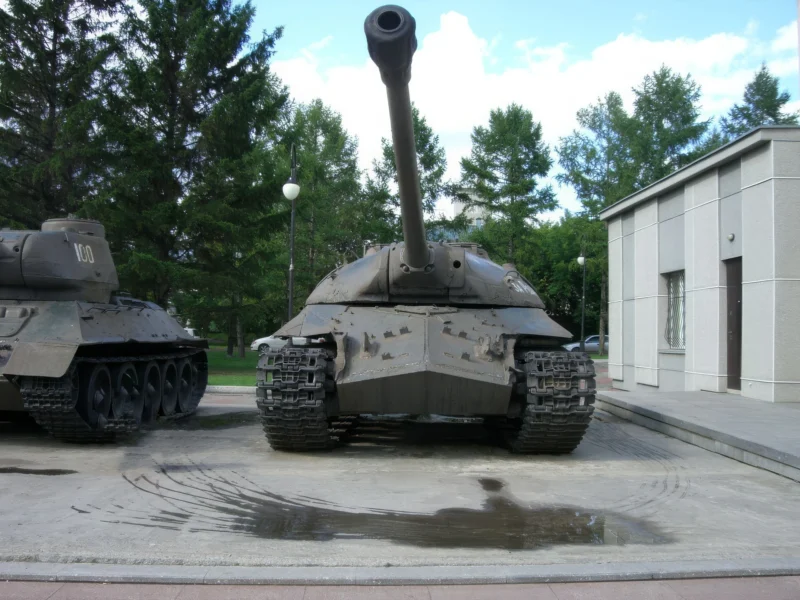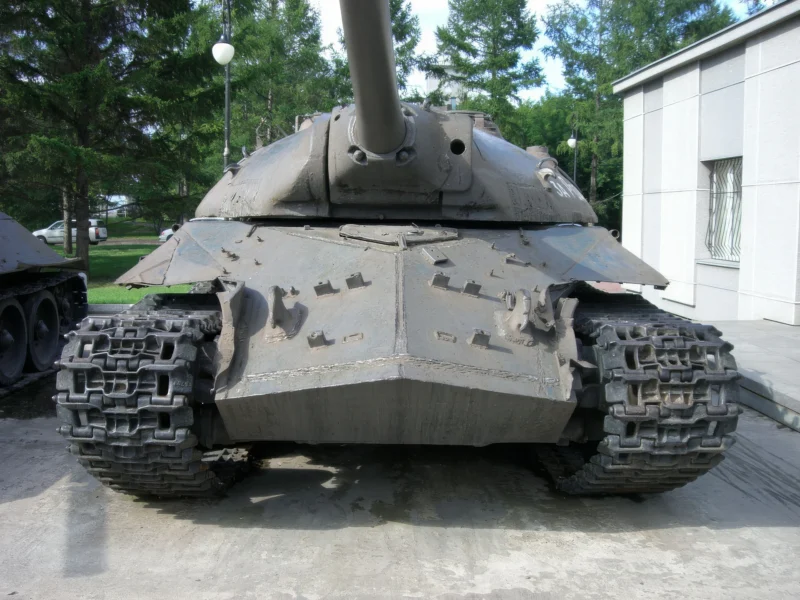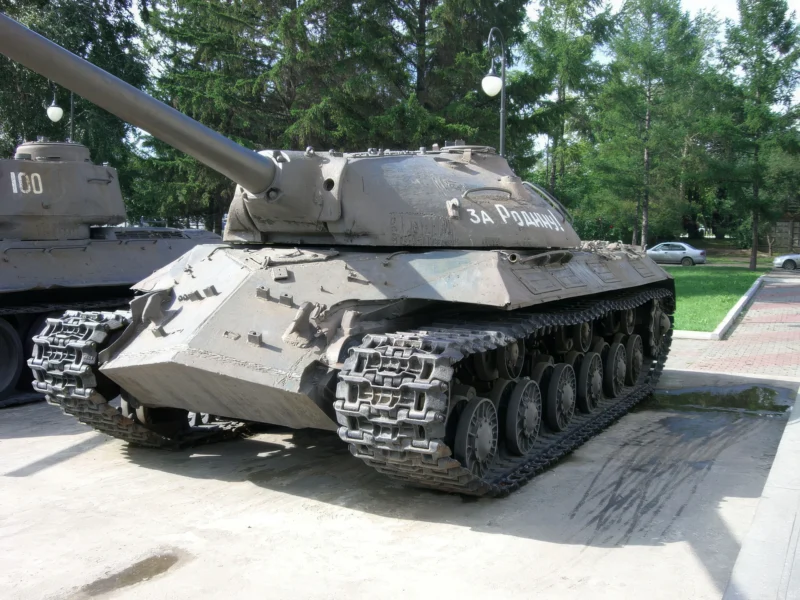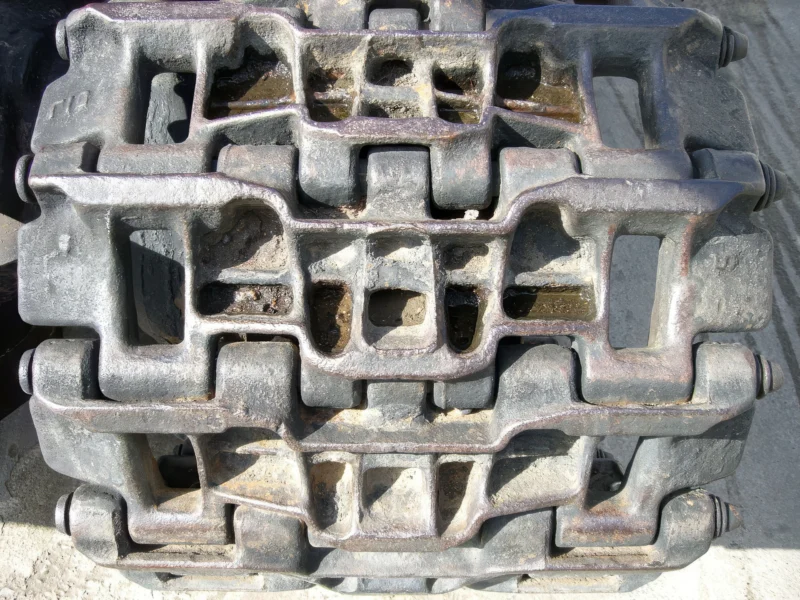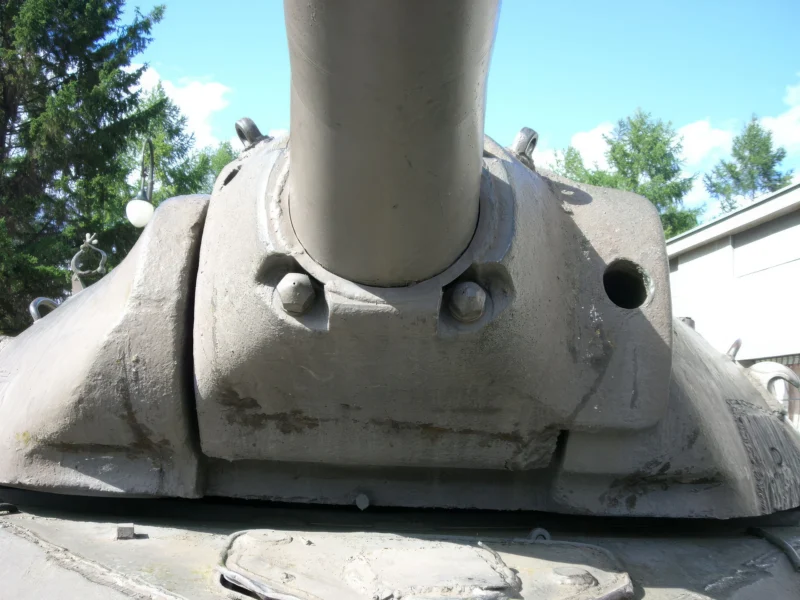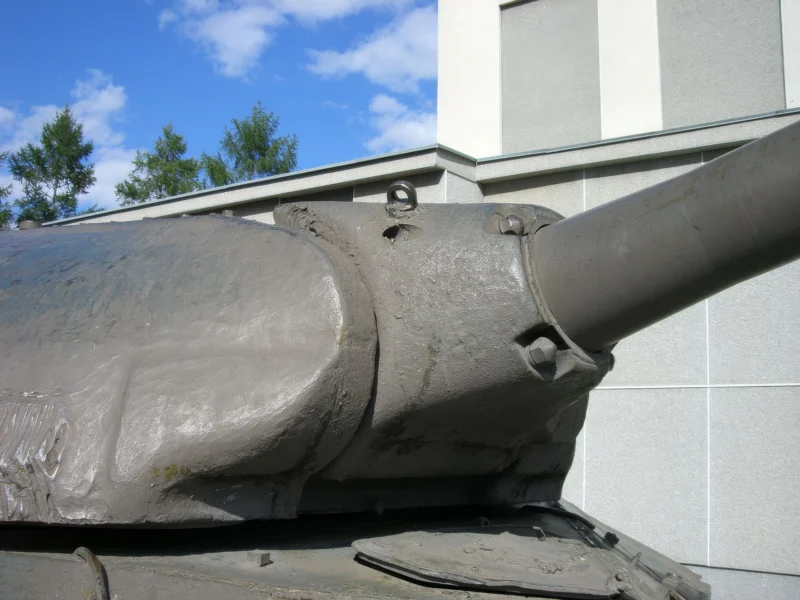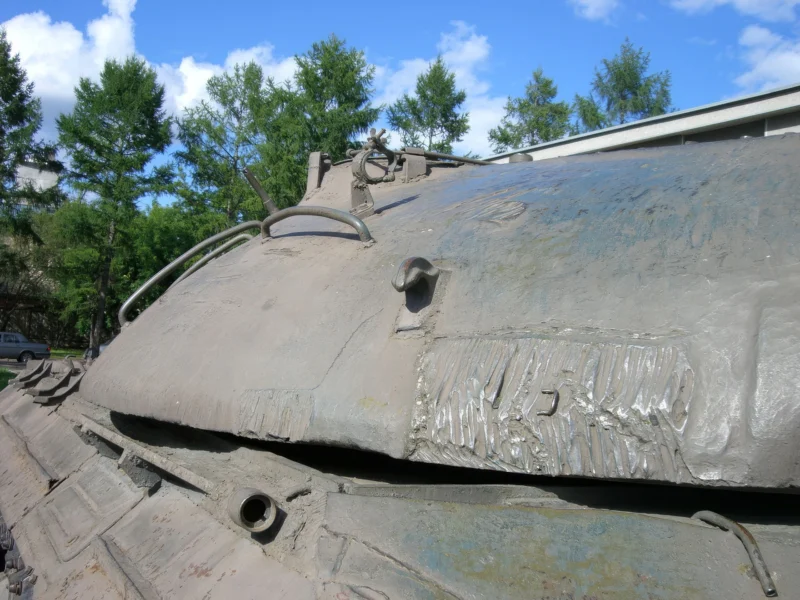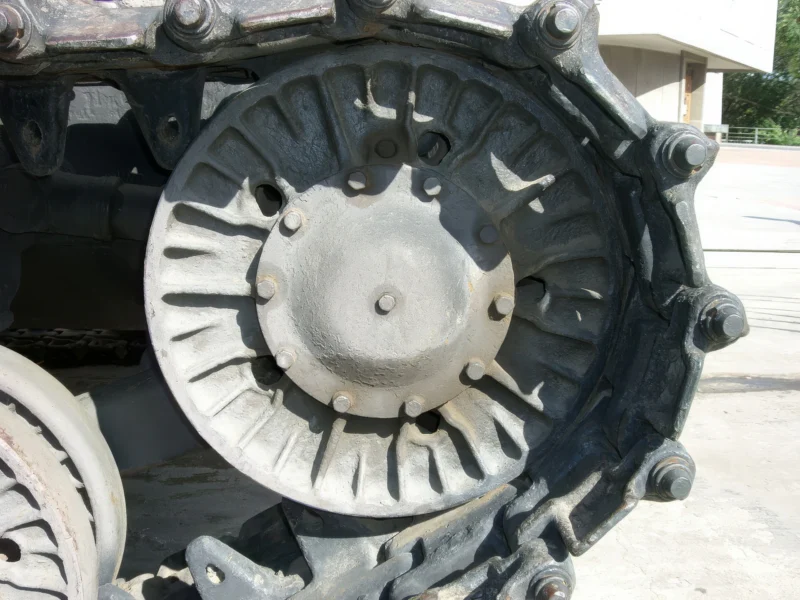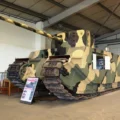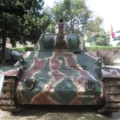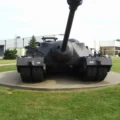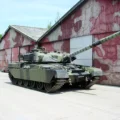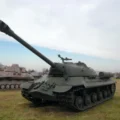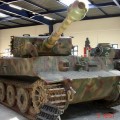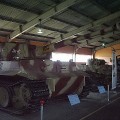
IS-3 | |
|---|---|
| País | URSS |
| Tipo | Tanque pesado |
| Descrição | Álbum 50 fotos do tanque "IS-3" |
Galeria de fotos em um tanque pesado IS-3, O tanque pesado IS-3 é um tanque de batalha soviético que apareceu no final da Segunda Guerra Mundial sem ter tido tempo para tomar parte ativa no combate. Foi visto pela primeira vez no desfile militar de 7 de setembro de 1945, durante o qual impressionou as potências ocidentais com sua modernidade. Seu nome vem das iniciais do ditador soviético Joseph Stalin ("I" para "Iossif") e o número 3 é devido ao fato de que foi a terceira versão da série de tanques Josef Stalin a ser projetada e colocada em serviço.
Fonte: Wikipédia
Caractéristiques techniques : Équipage : 4 (un tireur/chef de char, un chargeur, un conducteur et un radio) Longueur : 10 m Largeur : 3,15 m Hauteur : 2,45 m Masse au combat : 46,5 tonnes Blindage : Jusqu’à 255 mm au niveau de la tourelle Armement principal : Un canon D-25T de 122 mm ayant une portée de 15000m Armement secondaire : Une mitrailleuse Degtyarev DP 28 de 7,62 mm et une mitrailleuse DShK de 12,7mm Moteur : Un V-11-1S-3 diesel de 12 cylindres de 38880 cm3 520 chevaux (385 kW) à 2 200 tours par minute Transmission : Chenilles de 6 roues motrices de chaque côté Suspension : Barres de torsion Vitesse sur route : 40 km/h sur route – 19 km/h sur tout terrain Réservoirs : 450 litres + 4 réservoirs extérieurs de 90 litres chacun Consommation : 340 litres pour 100 km Puissance massique : 11,2 chevaux par tonne Autonomie : 185 km
| IS-3 Caminhe por aí | |
|---|---|
| Fotógrafo | Dmitri Sribnyi |
| Localização | Museu Real do Exército e da História Militar, Bruxelas |
| Fotos | 31 |
Veja também:
While designed in late 1944, it arrived too late to see significant combat in World War II, with the first production batch leaving the factory in May 1945. It is, however, considered a transitional design and one of the first post-war Soviet tanks due to its revolutionary armor layout. Its distinctive profile earned it the nickname “Shchuka” (Pike) by its crew.
Soviet IS-3 Heavy Tank (Object 703)
| Feature | Specification (General/Typical) |
|---|---|
| Full Name | IS-3 (Iosif Stalin 3) / Object 703 |
| Tipo | Heavy Tank (Breakthrough) |
| Em Serviço | 1945–1980s (Soviet Union) |
| tripulação | 4 (Commander/Radio Operator, Gunner, Loader, Driver) |
| Mass (Combat) | Approx. 46.5 tonnes (102,500 lb) |
| Length (Gun forward) | 9.85 m (32.3 ft) |
| altura | 2.45 m (8 ft 0 in) |
| Main Armament | 1 x 122 mm D-25T rifled tank gun (28 rounds) |
| Secondary Armament | 1 x 7.62 mm DT Coaxial MG, 1 x 12.7 mm DShK AA MG |
| Motor | V-2-IS V-12 Diesel |
| Engine Power | 520 hp (390 kW) |
| Max Speed (Road) | Approx. 37 km/h (23 mph) |
| Operational Range (Road) | Approx. 150 km (93 mi) |
Key Design Features
- “Pike Nose” Hull: The most defining feature of the IS-3. The frontal armor was composed of three welded plates angled steeply into a ‘V’ shape, which maximized the chance of shell deflection and increased effective armor thickness (up to 110 mm at 55° on the glacis).
- Hemispherical Turret: The turret was a low, flattened, cast dome (up to 250 mm thick on the front). This shape drastically increased its ballistic protection and became the hallmark of subsequent Soviet tank designs, including the T-54/55.
- Powerful Main Gun: It retained the high-velocity 122 mm D-25T gun from the IS-2, known for its incredible destructive power against armor and soft targets. However, the use of two-piece ammunition (separate shell and charge) resulted in a slow rate of fire (2–3 rounds per minute) and necessitated a dedicated loader.
Service and Legacy
Although it missed the war, the IS-3 had a significant impact on post-war tank design, both Soviet and Western, due to its advanced armor geometry. It was prominently displayed during the 1945 Allied Victory Parade in Berlin, which reportedly caused significant concern among Western military observers. The tank later saw action in conflicts like the Soviet invasion of Hungary (1956) and the Six-Day War (1967).
Views : 4890
